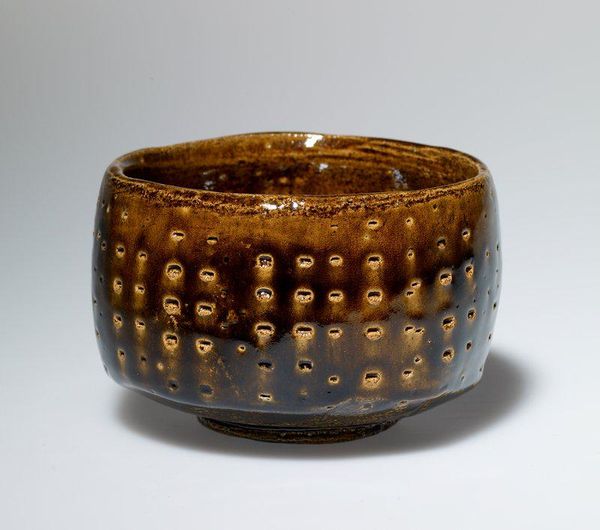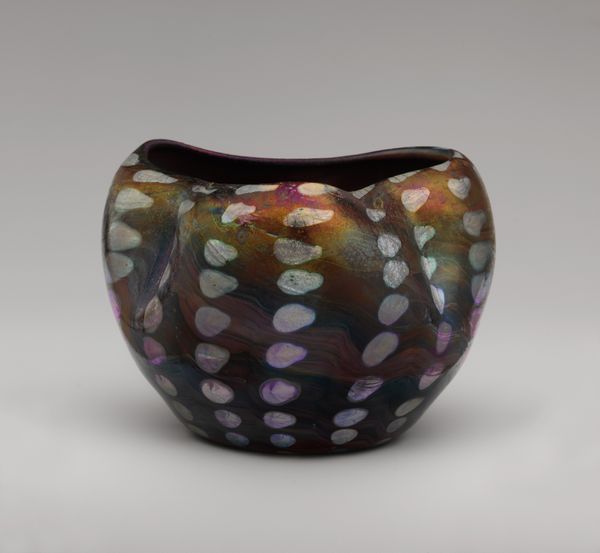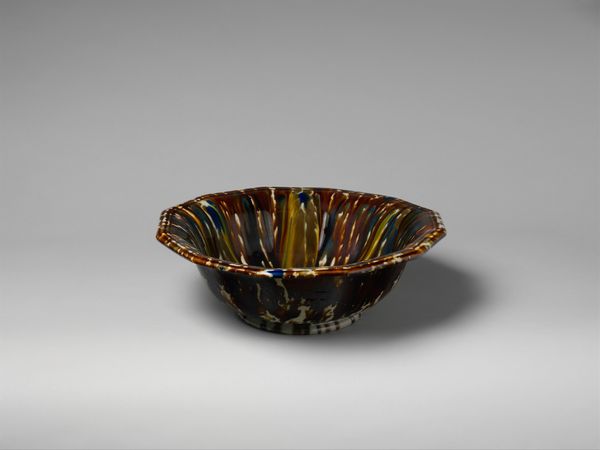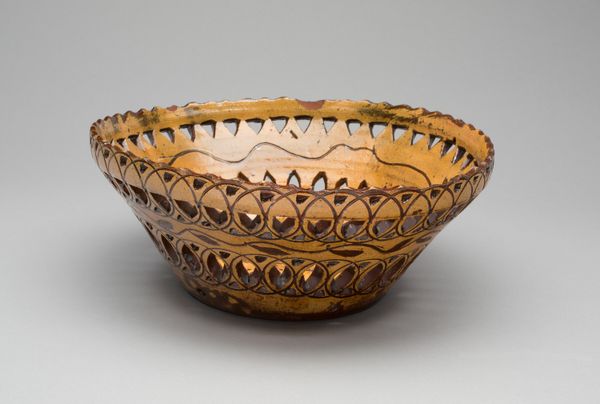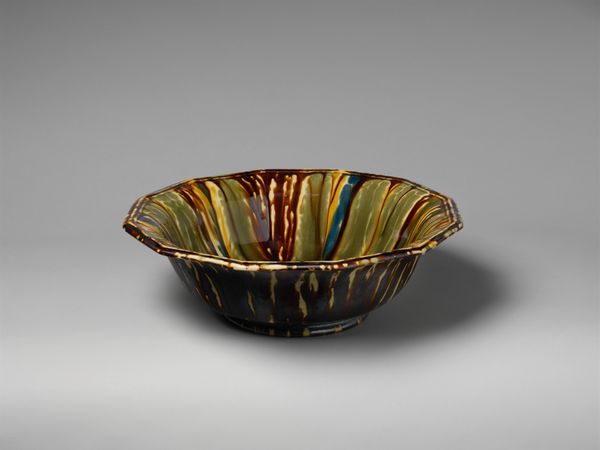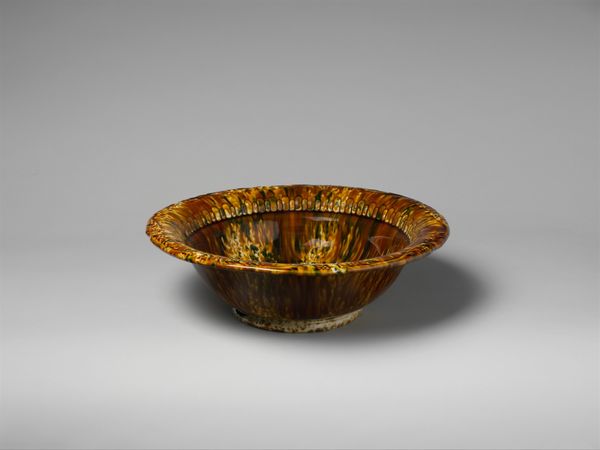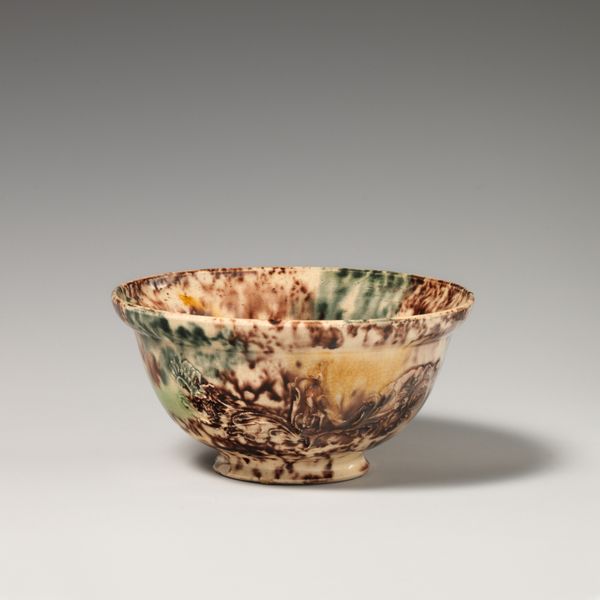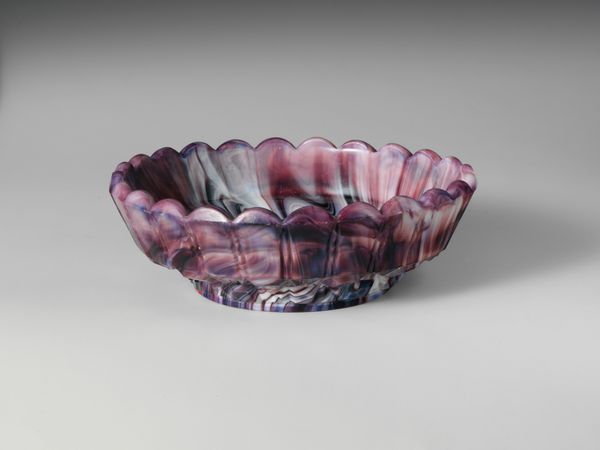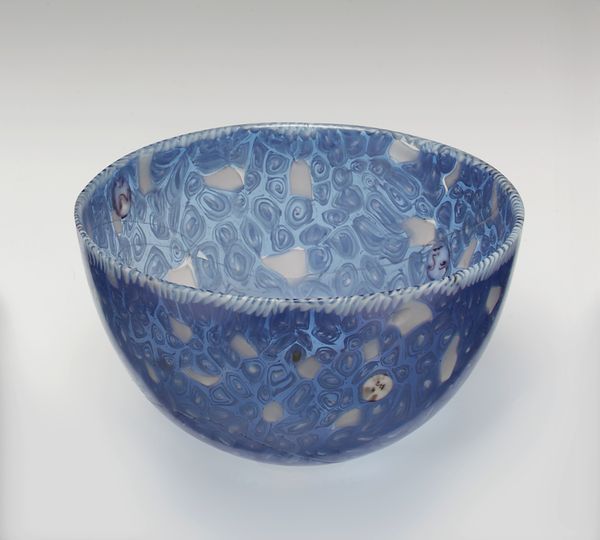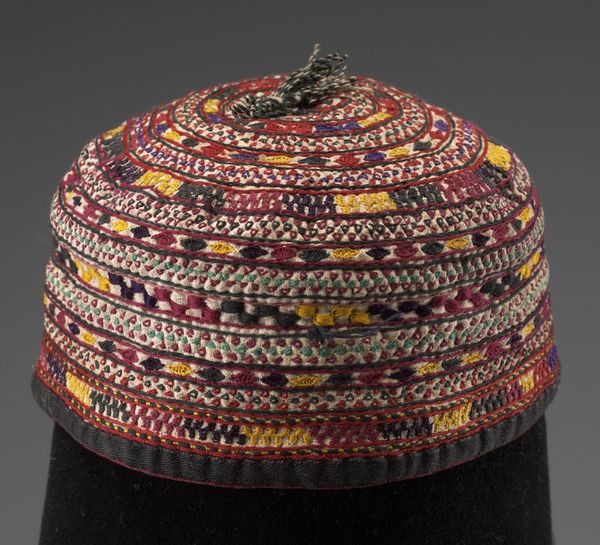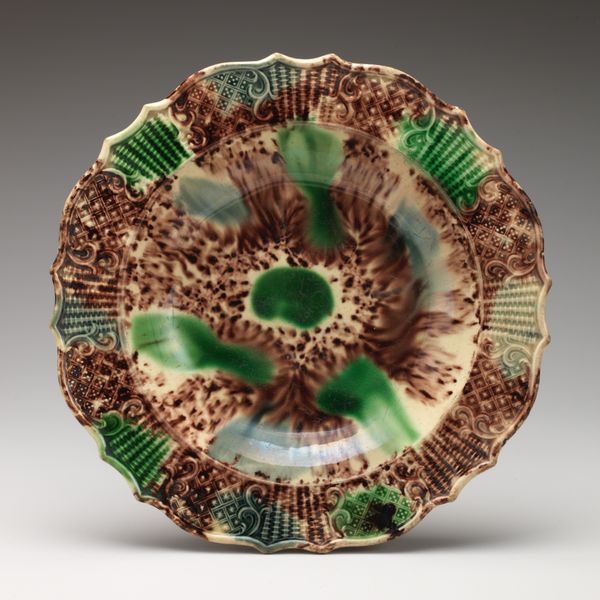
ceramic, glass, sculpture
#
art-nouveau
#
decorative element
#
ceramic
#
glass
#
sculpture
#
ceramic
#
decorative-art
Dimensions: Overall: 3 1/4 × 5 in. (8.3 × 12.7 cm)
Copyright: Public Domain
Editor: So this is Vincenzo Moretti's "Millefiori bowl," dating from around 1875 to 1885. It’s made of glass, and the craftsmanship is astounding. The surface looks almost textile. What’s your interpretation of this work? Curator: Well, I see more than just a pretty bowl. Consider the socio-economic context of late 19th century Venice, a period marked by the rise of tourism and a conscious revival of Venetian artistic traditions. Millefiori, meaning "thousand flowers," became a symbol of Venetian craftsmanship. But who benefitted from this revival? Who were the artisans, and how were they positioned within the economic structures of the time? This bowl is as much about the commodification of craft as it is about artistry. Editor: That's a really interesting point. I hadn't considered the economics behind it. It makes me think about who would have bought this bowl back then. Was it meant for a certain class of people? Curator: Exactly. This piece likely catered to wealthy tourists seeking authentic Venetian souvenirs. By examining the bowl through a lens of class and consumption, we start to unravel a complex story about the relationship between art, tourism, and social hierarchy. Does that change how you view it? Editor: Definitely. It's no longer just a beautiful object; it's a document of its time, revealing these power dynamics through its very existence. Curator: And that tension, that negotiation between tradition and modernity, craft and commerce, is precisely what makes this seemingly simple bowl so compelling. Editor: Thanks for illuminating those connections for me! Curator: My pleasure. Hopefully, we can all move forward reflecting more on the intersectional layers of visual culture.
Comments
No comments
Be the first to comment and join the conversation on the ultimate creative platform.
